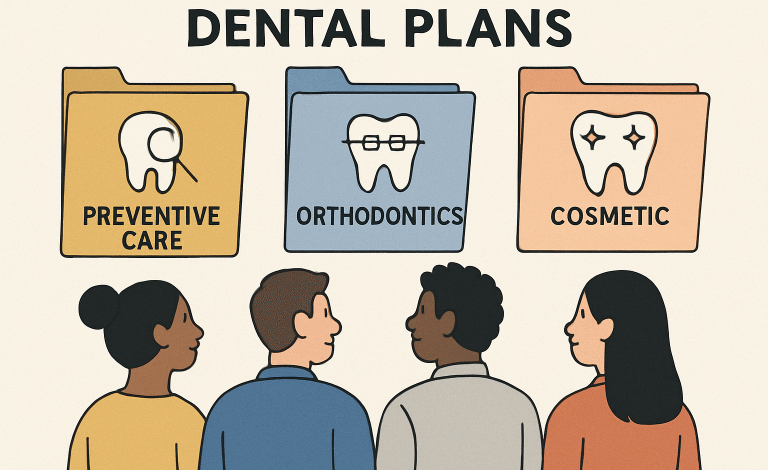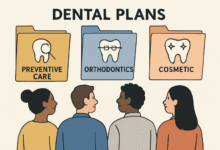The Future of Employee Dental Benefits Plan Design

Key Takeaways
- Multiple dental plan options cater to employees’ diverse needs and encourage higher satisfaction rates.
- An increased focus on preventive dental care reduces costs and improves overall health outcomes.
- Tele-dentistry and tech innovation are shaping the accessibility and effectiveness of dental plans.
- Integrating dental and medical benefits leads to a more holistic approach to employee wellness.
Employee dental benefits are moving toward a more wellness-focused and technology-enabled approach. Traditional plans are giving way to flexible options that address diverse employee needs while emphasizing preventive care to lower long-term costs and improve overall health outcomes. Digital tools, telehealth services, and streamlined access enhance convenience, empowering employees to take a proactive role in oral health. Employers who adopt innovative designs improve workforce well-being and reinforce productivity, loyalty, and job satisfaction. These evolving benefits signal a shift from basic coverage to comprehensive health integration, making dental care a strategic advantage. Companies that stay ahead of these changes are competitive employers committed to meeting modern workforce expectations and sustaining long-term organizational success.
Introduction
The American workforce is more diverse and health-conscious than ever, prompting employers to rethink how they structure dental benefits. Employees expect benefits that offer real value, comprehensive care, and the ability to fit coverage to their unique circumstances. As a result, forward-thinking companies are searching for ways to differentiate their dental plans, align with overall wellness initiatives, and maximize satisfaction by encouraging preventive care. Today’s HR professionals and business leaders are turning to flexible options that enable them to compare dental insurance features side by side—ensuring employees get the coverage they want and need.
This shift isn’t just about attracting top talent—improved dental benefits are linked to better oral health, fewer absences, and enhanced productivity. Employers also recognize that dental health is a window into broader wellness, with research increasingly showing a correlation between oral and systemic health. As tele-dentistry, digital access, and integrated health plans become mainstream, organizations are reimagining what a truly competitive dental package looks like.
Offering Multiple Plan Options
Gone are the days when one-size-fits-all dental coverage was sufficient. Employers now recognize that employees’ oral health requirements—and their budgets—vary distinctly from person to person. Modern dental plan design often includes tiered options, ranging from basic preventive-only coverage to robust plans with orthodontics and cosmetic procedures. This empowers employees to select the coverage that best meets their needs for themselves and their families, ultimately reducing stress and increasing job satisfaction.
Individual choice plays a vital role in retention. A National Association of Dental Plans survey shows employers providing multiple plan options achieve higher enrollment and better benefit usage. Offering a range of choices helps close coverage gaps, enabling young professionals, families, and older adults to access affordable and meaningful care.
Emphasis on Preventive Care
Preventive services such as cleanings, routine exams, sealants, and early intervention measures are the cornerstone of today’s top dental plans. Employers increasingly design benefits to not only cover routine visits but also encourage their use—eliminating or minimizing out-of-pocket costs for preventive care and often providing incentives for regular dental checkups.
This approach is grounded in data: the ADA finds regular preventive dental visits are associated with a significant reduction in major dental issues later in life. By catching and treating problems early, both companies and employees avoid the greater costs and workplace disruption that come from extensive dental procedures down the line. Preventive care also helps identify risk factors for broader medical concerns, linking oral wellness directly to long-term health outcomes. Read more about why prevention is key in the New York Times’ coverage of dental checkups.
Integration with Overall Health Plans
Employers now understand the intrinsic connection between oral health and overall health. Integrated benefits packages—where dental, vision, and medical coverage work together—are becoming a standard. These designs streamline administration and drive better health by ensuring dental issues that may indicate systemic disease, such as diabetes or heart disease, are detected and referred for follow-up care.
With integrated plans, data can flow freely between providers, allowing for proactive interventions and comprehensive well-being strategies. Companies see less absenteeism and improved productivity as employees’ health needs are addressed holistically, reflecting a growing consensus that a healthy mouth is part of a healthy body. Leading organizations like the Society for Human Resource Management highlight integrated design as a trend for evolution in benefits.
Adapting to Technological Advancements
Technology rapidly transforms dental care, and modern dental benefits follow suit. From digital x-rays and laser treatments to 3D printed orthodontics, employers are working with carriers to cover advanced procedures that deliver better outcomes and improved comfort. Teledentistry in particular is making dental care more accessible, especially for employees in remote or underserved locations. Employees can now receive expert advice, triage emergencies, and even get prescriptions via video consults—helping maintain continuity of care.
Tech-forward benefits design enhances employee experience and supports a more flexible, mobile workforce. Thanks to networks that include digital appointment scheduling and mobile record-keeping, access to treatment options and providers is becoming easier. These advancements signal an essential shift towards dental coverage that meets employees where they are, both physically and in their health journeys.
Conclusion
The future of employee dental benefits is shifting toward flexibility, proactive prevention, and integration with broader health and technology-driven solutions. Instead of offering one-size-fits-all coverage, employers increasingly recognize the importance of plans that meet diverse employee needs. Preventive care—such as regular checkups, cleanings, and early intervention—is becoming a priority, reducing long-term costs while supporting overall wellness. At the same time, digital tools and telehealth options enhance convenience, access, and engagement, making dental care more seamless within employees’ busy lives. Organizations that adopt these innovations strengthen employee satisfaction and foster a culture of health and productivity. In today’s competitive job market, forward-thinking dental benefits are a powerful tool for attracting and retaining top talent, ensuring companies remain desirable, supportive, and aligned with evolving workforce expectations.

